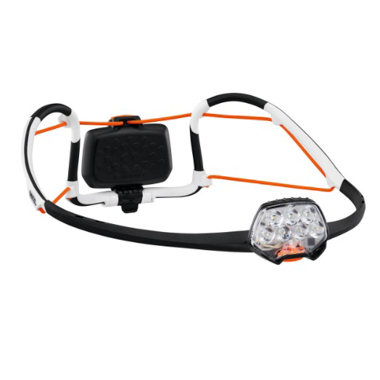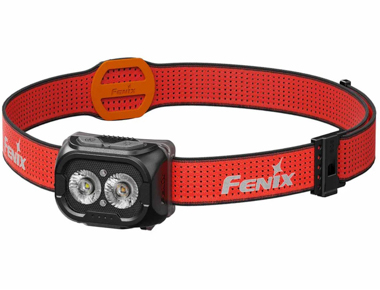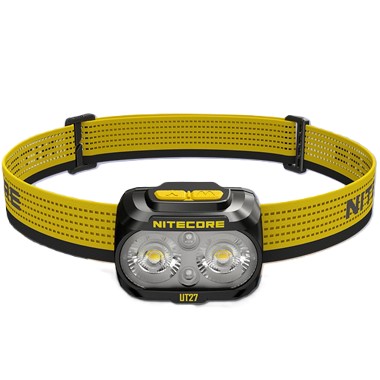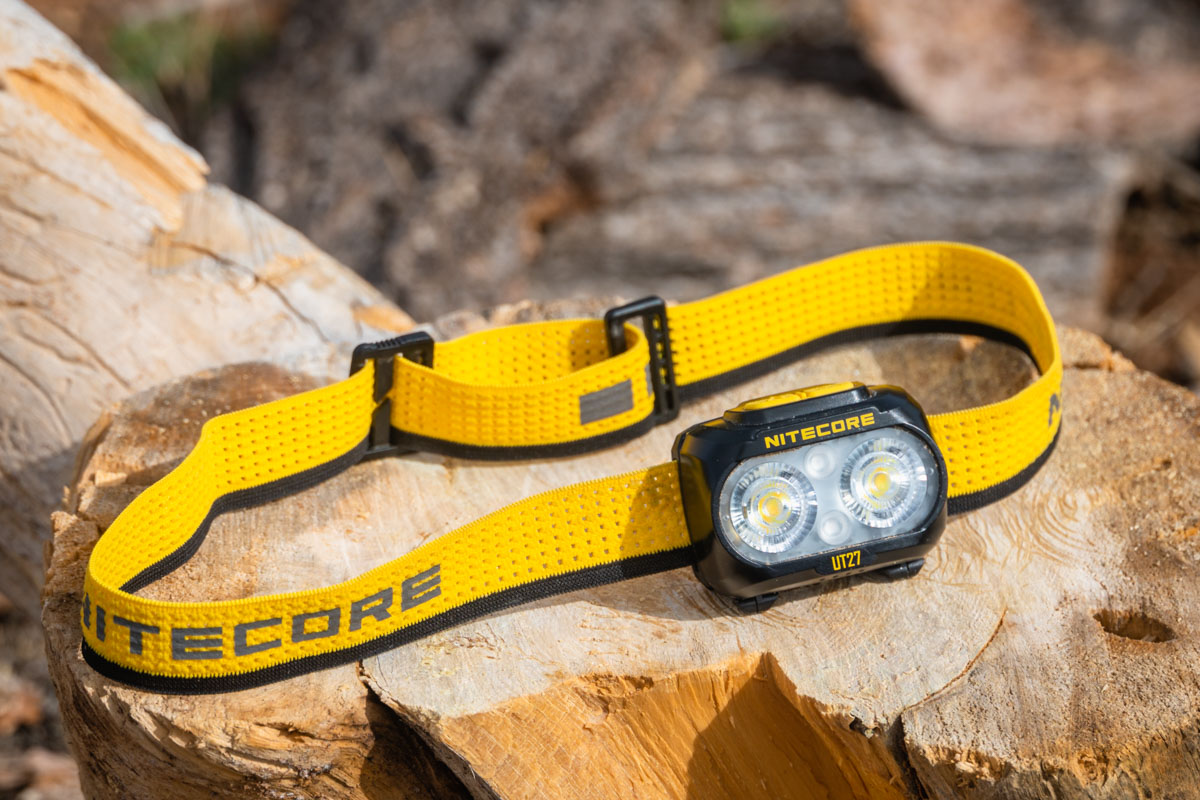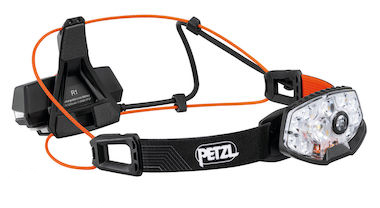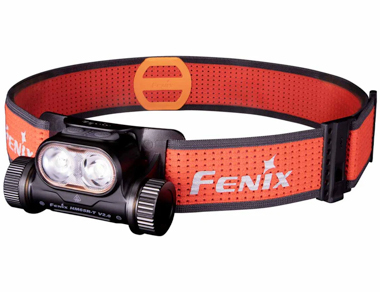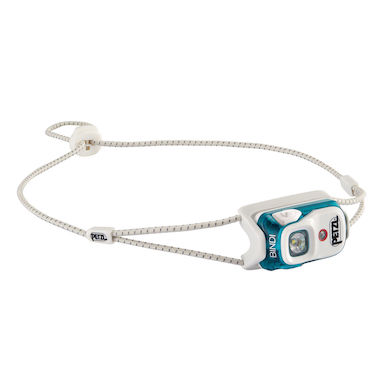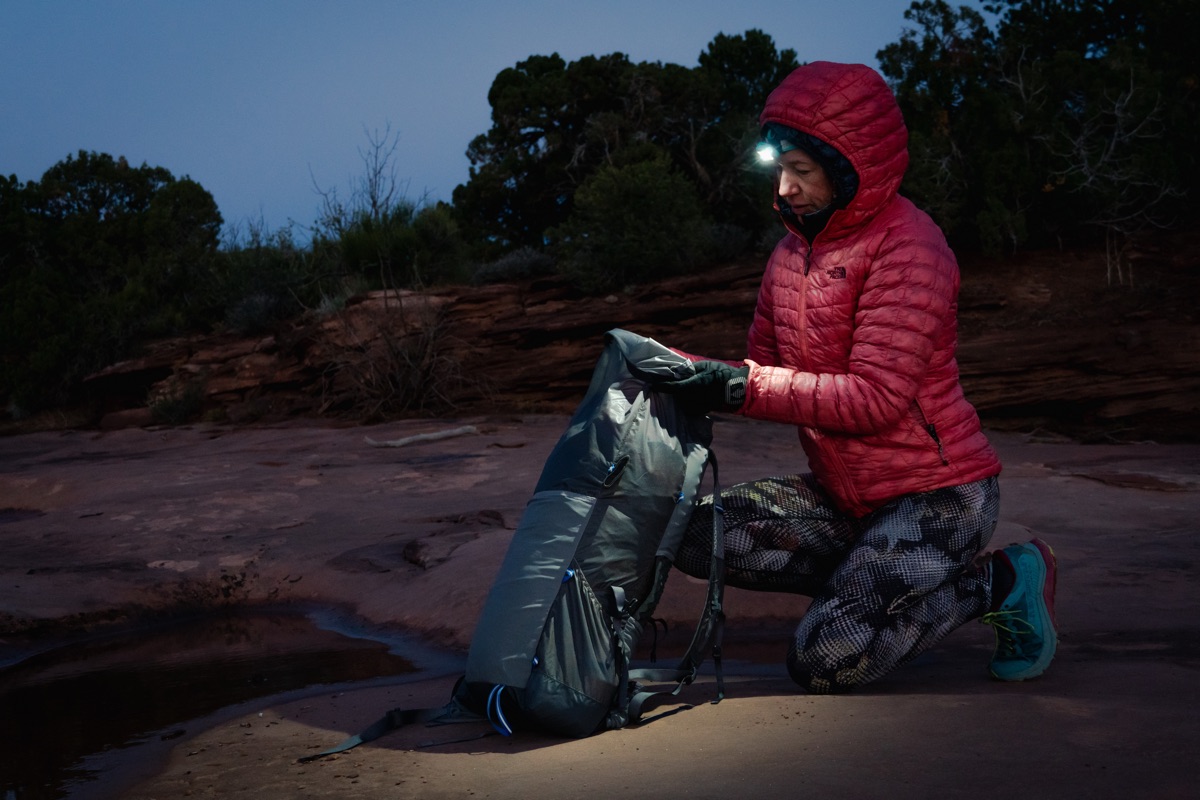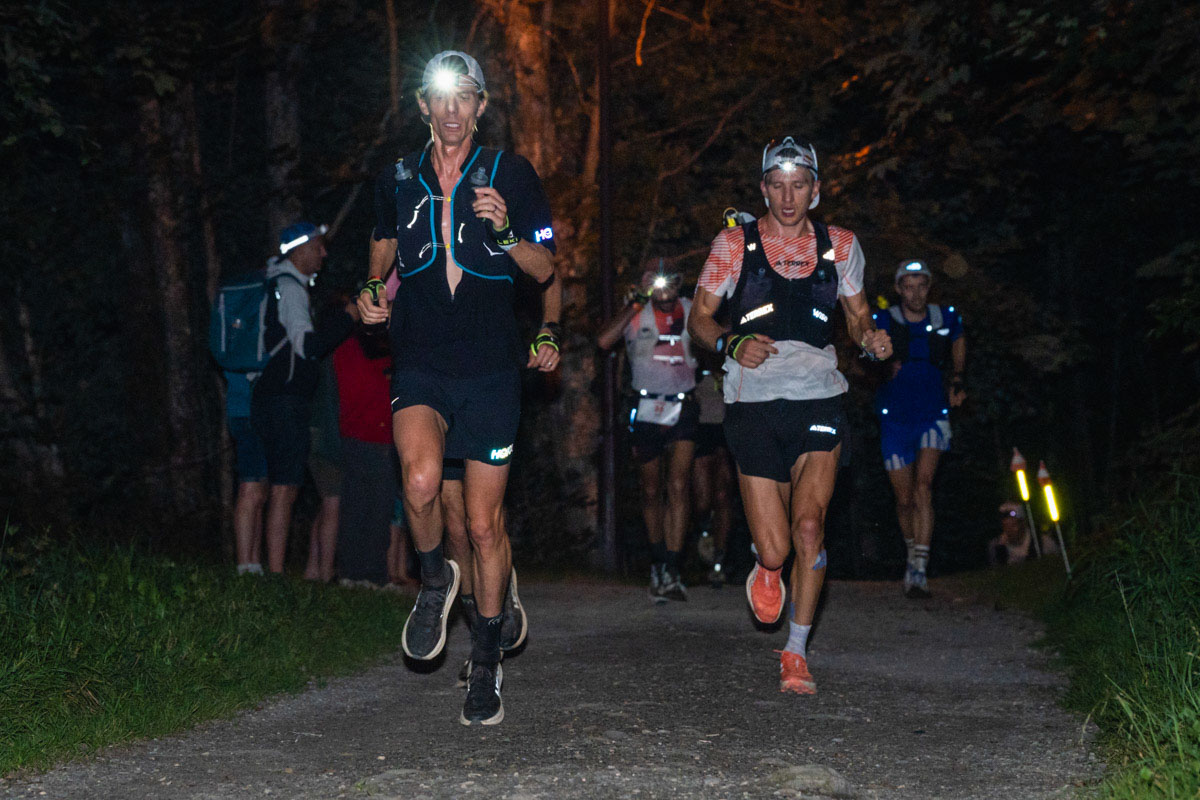For most trail runners, a headlamp is an essential piece of gear, especially during the winter months when the days are short and many of us find ourselves running before the sun comes up and after it goes down. Whether out training, racing through the night during an ultra, or going on a fastpacking trip where you need a light for camp, a reliable headlamp can make the difference between an adventurous jaunt and stumbling down a dark trail. Fortunately, there are many great headlamp options on the market, and this guide can help you choose the best running headlamp for your needs and budget.
As we researched headlamps, we compared battery life, brightness settings, weight, and comfort. We selected the best lights for everyday trail running, ultrarunning, and ultra-lightweight backup options. Our testing team then took these headlamps to the trails for sunrise runs, 100-mile races, and multi-day fastpacking outings to see how they performed.
We consolidated our findings and rounded up the best headlamps for running below, ranking our top picks according to a few key categories. Coming from the same brand, we chose the Petzl Iko Core and the Petzl Nao RL as our favorite overall headlamps for shorter runs and for ultras, largely due to their comfort, and we loved keeping the minuscule Nitecore NU25 MCT UL in our pack as a backup, knowing that it would provide enough light to get us home if we needed it to.
For more background information, see our buying advice, testing methodology, and frequently asked questions below our picks.
Best Running Headlamps
- Best Running Headlamp for Trails: Petzl Iko Core
- Best Running Headlamp for Trails — Runners-Up: Fenix HL18R-T Rechargeable Headlamp 2.0 and Nitecore UT27 MCT Pro
- Best Headlamp for Ultrarunning: Petzl Nao RL
- Best Headlamp for Ultrarunning — Runner-Up: Fenix HM65R-T V2.0 Rechargeable Headlamp
- Best Ultralight Running Headlamp: Nitecore NU25 MCT UL
- Best Ultralight Running Headlamp — Runner-Up: Petzl Bindi

A line of headlamps illuminates the first climb at the 2025 Trail World Championships Long Trail. Photo: iRunFar/Eszter Horanyi
Best Running Headlamp for Trails: Petzl Iko Core ($105)
- Comfortable
- Lightweight
- Accepts AAA batteries in addition to the included rechargeable battery
Cons:
- The battery pack is awkward to change out
The Petzl Iko Core is our top pick among the best headlamps for running. We love its balance of lighting technology, weight, and comfort. Although brighter lights and longer battery life used to commonly come with compromises in weight and comfort, Petzl made no such compromises here.
This headlamp emits 500 lumens of clean, cool light with two lighting beam options — flood or mixed — and three lighting levels. Our testers found that the middle setting of 100 lumens was plenty for running at night, but we appreciated the 500-lumen setting when the trail got technical. At the 500-lumen setting, this light would work for 2.5 hours, enough for most of our dark runs.
The head harness of this light made it stand out from the competition. The silicone band was exceptionally comfortable and held the battery cradle easily, and we couldn’t even feel the LED panel on the front. When we tightened it down on our head, it never felt like there were any pressure points, and even when a bit loose, it never felt like it was bouncing around on our head. If you’re someone who gets headaches while wearing a headlamp, this could be a great option for you.
While it looks cumberson, the harness folds up for storage, so you can easily fit the headlamp into a pocket on your pack when you don’t need it. It’s not great in a pocket, though. Finally, this headlamp weighs less than 2.5 ounces and is sufficiently lightweight for a trail runner’s needs.
Our only complaint with this headlamp is that changing the battery during an all-night run can be fiddlesome, especially when cold and sleep-deprived.
Be sure to check out our in-depth Petzl Iko Core review.
Actual Weight: 2.4 ounces (68 grams) | Maximum Light Output: 500 lumens | Battery Source(s): 1,250-mAh Petzl Core rechargeable (included) or 3 AAA
Shop the Petzl Iko Core
The harness of the Petzl Iko Core keeps it secure without having to be excessively tightened down. Photo: iRunFar/Meghan Hicks
Best Running Headlamp for Trails — Runner-Up: Fenix HL18R-T V2.0 Rechargeable Headlamp ($55)
- Precision adjustment with BOA closure
- Easy to change batteries
- Great price
- Warm light option
Cons:
- Fenix headlamps don’t fit all heads comfortably
The Fenix HL18R-T V2.0 Rechargeable Headlamp takes advantage of the micro-adjustability of a BOA-style closure to create a headband that can be adjusted easily on the fly. The initial version of this light also had a BOA system, and we were skeptical it could hold up to the rigors of countless hours on the trail or repeated stuffing into a running vest. However, testing proved our doubts unfounded, and the BOA allows enough micro-adjustment for literally dialing in the perfect fit.
The only more innovative strap design right now is the Petzl Iko Core, reviewed above. As far as basic fabric straps on headlamps, we haven’t found one more comfortable than this one.
Another advantage of this headlamp is that it’s super easy to change the battery on the go, and if you’re out there long enough to need fresh batteries, you probably need the process to be easy. The 2.0 version of this light got a bigger rechargeable battery, allowing for longer run times between battery charges or swaps.
We love that this headlamp has both a warm light and a white light setting. The more yellow warm-light option feels less harsh on the eyes, especially as the hours added up, and we found we preferred it when running at night.
In the warm light setting, you can choose between four intensity options, with the 500- and 300-lumen ones being most applicable to trail running. In the white light option, the lamp maxes out at 800 lumens, which is incredibly bright and let you see objects far in the distance. At 350 lumens — a good level for trail running — it will last for 6.5 hours. On the very lowest setting, it will run for approximately 160 hours; however, realistically, you’ll need to have it on its medium or high setting for trail running.
If you’ve ever accidentally turned a headlamp on in your pack only to find the battery mostly drained when you need it most, you can appreciate the value of being able to lock one in the Off setting, which you can with this headlamp. The battery indicator is also easy to see, so you can tell how much power you have left. This headlamp can run on AAA batteries or the included rechargeable battery pack.
It’s also worth noting that this headlamp is incredibly affordable.
Claimed Weight: 3.6 ounces (103 grams) | Maximum Light Output: 800 lumens | Battery Source(s): 1,900-mAh rechargeable (included) or 3 AAA
Shop the Fenix HL18R-T V2.0 Rechargeable HeadlampBest Running Headlamp for Trails — Runner-Up: Nitecore UT27 MCT Pro ($60)
- The warm light option is easy on the eyes
- Lightweight
- The battery is easy to swap
- The locking mechanism keeps it from accidentally turning on
Cons:
- Battery life won’t get through an entire night on the medium setting
The Nitecore UT27 MCT Pro is a great headlamp option for those looking to run for a few hours in the dark and want a headlamp that can provide ample light without being too heavy. At $60, it’s also significantly less expensive than many of the other headlamps on this list while still offering exceptional performance. It’s worth noting for clarity that Nitecore sells this headlamp in the “Pro” configuration with two batteries, or with just a single battery for $55. We personally never think it’s a bad idea to have a spare battery on hand.
At 2.6 ounces, it is light and small enough to easily carry in a pack and has several different lighting settings to suit different lighting needs. Like the Fenix HL18R-T V2.0 Rechargeable Headlamp reviewed above, the UT27 has a warm light setting. This light is more yellow than the harsher white light that most other headlamps use, and it feels easier on the eyes, especially after multiple hours of use. Its other two settings are neutral white and cool white.
In this warm light setting, the battery will last for 3.5 hours at 500 lumens and 6.5 hours at 280 lumens, both levels providing plenty of light to run trails. Its white light setting offers up to 800 lumens for 2.5 hours if you want to really light up the night.
All three colors of light have a 100-lumen low-light setting that offers 14.5 hours of illumination. There is also a red light that you can use for nighttime chores if you’re using this headlamp for fastpacking.
While this headlamp doesn’t have enough power to power a full night of trail running with reasonable illumination on a single battery, swapping out the battery in the field is easy. A fun feature is that the battery compartment glows in the dark, making it easy to insert a new battery if you have no other light source.
In addition to the rechargeable Li-ion battery, you can also use three AAA batteries for power, which will get you a slightly lower run time than the rechargeable one. We appreciate that there’s a battery indicator on the outside to keep track of the approximate run time we have left and help us decide what brightness level to use.
This light provides up to 100 degrees of illumination in front of you, plenty to see in your peripheral vision. It can also throw a beam 183 meters on its 800-lumen mode. This is an excellent option if you’ve lost the trail or need to spot a landmark in the distance.
The button on top of the light is easy to use, even when tired or with cold fingers. Holding down the right side of the button gives you a yellow light, and the left gives you a white light. Then, single presses of the button toggle through the four different brightness settings.
A simple headband is comfortable enough and easy to adjust as you add or subtract layers from your head. It has a small silicone band on the inside to help keep it in place, and reflective hits on the outside provide additional visibility if running on the roads. The light sits on a 90-degree swivel so that you can point it in any direction.
Actual Weight: 2.6 ounces (75 grams) | Maximum Light Output: 800 lumens | Battery Source: 1,500-mAh rechargeable (included) or 3 AAA
Shop the Nitecore UT27 MCT ProBest Headlamp for Ultrarunning: Petzl Nao RL ($180)
- Reactive Lighting system automatically adapts to changing light needs
- The battery will last through the night
- It is relatively easy to change out the battery
Cons:
- Not our top choice for comfort
- Pricey
The Petzl Nao RL is the updated version of the Petzl Nao+, which was the go-to ultrarunning headlamp for a half decade. As with its predecessor, this headlamp has a lot going on. First and foremost is its lighting, which comes in both regular and Reactive Lighting options.
The latter setting automatically adapts the beams brightness and focus to be dimmer and wider for close-range vision and to be brighter and more focused when looking further off. This can extend battery life by dimming the bulb when there’s less need for full power. The Reactive Lighting setting can be a nuisance to use if you’re frequently looking between the ground and the surrounding terrain, as it will continually dim and brighten based on any reflected light, and the lag is noticeable.
We like that this light has a red light in the back to keep you visible to approaching cars or other runners. It can illuminate as a solid red light or a strobe, and you can control it independently from the front light. The reflective headband also increases your visibility to others. This makes it an excellent choice for folks who regularly run on streets where nighttime visibility is paramount to safety.
When it comes to the battery, the whole package is not ultralight, but one battery will give you an entire night of decently lit trail running. We can say from experience that it’s probably worth the 4 a.m. battery switch-out to make the last hour or so of darkness a little brighter. On that note, switching batteries in the field is a relatively easy, two-step process.
This headlamp does have a couple of downsides. Its comfort is not amazing, especially if your hair is in a ponytail. We recommend a buff or backward cap under it for a full night of running. Also, it’s expensive. That said, this is our favorite option if you’re looking for a headlamp with Reactive Lighting or one you can trust for all-night runs.
Be sure to check out our in-depth Petzl Nao RL review to learn more.
Actual Weight: 5.2 ounces (146 grams) | Maximum Light Output: 1,500 lumens | Battery Source(s): 3,200-mAh rechargeable (included)
Shop the Petzl Nao RLBest Headlamp for Ultrarunning — Runner-Up: Fenix HM65R-T V2.0 Rechargeable Headlamp ($105)
- Multiple lighting options with a maximum of 1,400 lumens
- Long battery run time
- A reasonable price for what you get
Cons:
- Heavier than comparable running headlamps
- Both the light and the battery are in the front
- Fenix light mount doesn’t fit all heads
The Fenix HM65R-T V2.0 Rechargeable Headlamp is a feature-filled package and an excellent headlamp for ultrarunning. This newest version has a bigger battery for longer run times, 200 more lumens at its maximum brightness, and maintains all of the same features that we’ve loved in the past. The headband also received a new BOA-style closure system that allows for microadjustments, but it lost the strap that used to go over the top of the head. Overall, we think the new head strap setup is comfortable and functional.
The headlamp offers a maximum of 1,600 lumens of light, making it one of the brightest lights on our list. With a powerful 3,400-mAh 18650 lithium-ion rechargeable battery, this headlamp offers plenty of light for either a whole night of really brightly lit running or two nights with decent lighting without having to charge or change the battery, while the use of an 18650 allows for quite inexpensive replacement batteries.
This headlamp also has warm and white light options, which we appreciate as we find that the warm light option is easier on the eyes as the long hours of the night wear on. It doesn’t have separate flood and spotlight options, so if you like to switch between those settings, this isn’t the light for you.
Both the lights and the battery are stored on the front of the headlamp, which means a lot is going on up front, and you’ll want to wear a layer — like a folded neck gaiter or beanie — underneath it for all-night comfort. This isn’t the lightest headlamp, something you may want to consider if you don’t like having heavier items on your head. Some of our testers found that the front mount didn’t fit their forehead well, and they weren’t able to tighten the strap down enough to keep everything from bouncing without it being uncomfortable.
While it may look like you’re carrying a small alien on your forehead, you’ll have a bright headlamp made for being out for as long as your legs will carry you. If you’re someone who doesn’t want to worry about a headlamp dying in the middle of the night, the performance and battery of this light easily outweigh its drawbacks.
Actual Weight: 4.9 ounces (140 grams) | Maximum Light Output: 1,600 lumens | Battery Source(s): 3,400-mAh 18650 rechargeable (included) or two CR123As
Shop the Fenix HM65R-T V2.0 Rechargeable Headlamp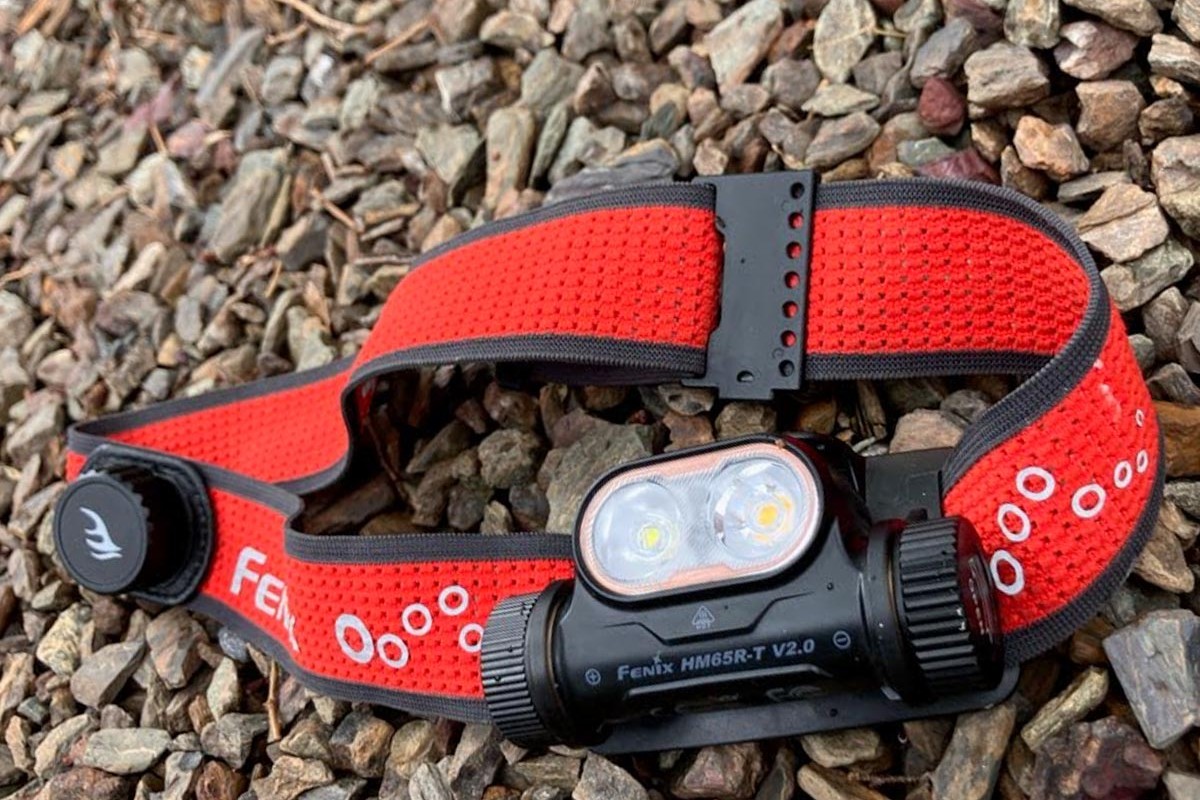
Our testers loved the easy-to-adjust headband of the Fenix HL18R-T V2.0 Rechargeable Headlamp. Photo: iRunFar/Peta Morrow
Best Ultralight Running Headlamp: Nitecore NU25 MCT UL ($37)
- Weighs less than 2 ounces
- Great value
- Good backup headlamp option
Cons:
- We don’t love the aesthetic
The Nitecore NU25 MCT UL might be the niftiest little headlamp you didn’t know existed — or that you needed. But if you’re someone who has gotten caught out in the dark during a run that’s gone a little too long and wished you had something other than your phone to light your way back home, you’ll appreciate this little light that you can keep permanently stowed in your hydration vest. With a very reasonable price, there’s no reason not to have it around.
This headlamp is an upgraded version of the original Nitecore NU25. We learned about this light through the thru-hiking community, which has known about this gem for a long time. This newest version not only has a bigger battery, but it now comes with three different light colors, including warm light, which we appreciate for long runs in the dark.
What hasn’t changed about this headlamp is its small and light design. Weighing under two ounces, this is a great backup or simple ultralight headlamp if you’re counting grams. It is a powerhouse of light for its weight, providing 400 lumens at its highest setting. Its 200-lumen setting is sufficient for a couple of hours of light for trail running, as long as the trail isn’t super technical. The dim settings allow you to do chores around your campsite while consuming almost no battery power. The built-in rechargeable battery plugs in with a USB-C cord.
Our only complaint with this headlamp is its aesthetic. We can hardly ding something so wonderful just on looks; however, it does remind us of a kid’s toy headlamp.
Actual Weight: 1.6 ounces (46 grams) | Maximum Light Output: 400 lumens | Battery Source(s): 700-mAh rechargeable (included)
Shop the Nitecore NU25 MCT ULBest Ultralight Running Headlamp — Runner-Up: Petzl Bindi ($50)
- Great backup light
- Ultralight
- Comfortable
Cons:
- Not bright enough for technical trails
The small and sleek Petzl Bindi is an excellent backup headlamp to keep stashed in your hydration pack or running belt for those times you either forget your regular light or forgot to charge it. Tiny and compact, this headlamp weighs barely more than an ounce, and it’s so comfortable that you could easily forget you’re wearing it. Regardless of its size, it can still put out 200 lumens, and it’s telling that many racers at the 2025 Trail World Championships Long Trail were wearing it for the initial 45 minutes of darkness of the race.
It’s shaped to fit the forehead and is a cinch to adjust, literally. The light has three modes and can be tilted up or down to light the trail ahead. It’s rechargeable via a micro-USB port on the side, which indicates it’s fully charged with a green light. A lock switch keeps it from turning on accidentally in your pack. For a tiny little light, it has a lot going on.
Of course, the primary downside of the Bindi is that its brightness tops out at 200 lumens, and most runners want more light for extended nighttime running, especially on technical terrain. But it’s hard to beat as a backup light or for someone looking to shave weight. It’s also great for digging through your car or hydration vest for spare gloves at the trailhead or keeping in your tent for nighttime bathroom breaks during fastpacking trips.
Actual Weight: 1.2 ounces (35 grams) | Maximum Light Output: 200 lumens | Battery Source(s): 680-mAh rechargeable (included)
Shop the Petzl BindiComparing the Best Running Headlamps
| HEADLAMP | PRICE | MAX LIGHT OUTPUT | BEAM DISTANCE |
| Petzl Iko Core | $105 | 500 lumens | 100 meters |
| Fenix HL18R-T V2.0 Rechargeable Headlamp | $55 | 800 lumens | 410 meters |
| Nitecore UT27 MCT Pro | $60 | 800 lumens | 168 meters |
| Petzl Nao RL | $180 | 1,500 lumens | 200 meters |
| Fenix HM65R-T V2.0 Rechargeable Headlamp | $105 | 1,600 lumens | 170 meters |
| Nitecore NU25 MCT UL | $37 | 400 lumens | 64 meters |
| Petzl Bindi | $50 | 200 lumens | 36 meters |
Buyer’s Guide: How to Choose a Running Headlamp
Brightness
For many runners, brightness is the top consideration when choosing between the best running headlamps on the market. However, it’s worth noting that brighter is not necessarily better. Both too much and too little light can cause eye strain over the long run. A better approach is to determine the right brightness level for your needs.
Timothy Gorbold, a headlamp product design engineer and veteran ultrarunner, put it this way: “Ideal brightness is a perfect ‘Well, it depends’ question. Generally, 300 lumens with the ability to adjust up to 500 or 800 lumens is a solid compromise between lighting the surroundings, creating the shadows needed for confident foot placement, and headlamp runtime.”
Some other factors worth considering when thinking about your ideal headlamp brightness include how long you’ll use the light (for an hour before dawn or through an entire night), what type of terrain you’ll be running (technical versus non-technical), how fast you’ll be moving, and the weather.
In most situations, we love the Petzl Nao RL Reactive Lighting setting, which automatically optimizes brightness according to estimated need.

The Petzl NAO RL is our favorite headlamp for ultrarunning because of its all-night capabilities and Reactive Lighting technology. Photo: iRunFar/Eszter Horanyi
Type of Light
Headlamps with multiple light settings usually offer two types of lighting: flood and long-throw. Some headlamps have a combination of the two. Floodlighting casts a broad cone of light over a shorter distance and is ideal for digging something out of your pack, reading a map, or setting up camp in the dark. The human eyes can see in about a 100-degree cone in front of the face, and most floodlighting illuminates that area.
Long-throw light, also called spotlight, is the most common type of lighting used on the trail. It casts a narrower beam out in front of you, lighting up the trail ahead at the expense of your peripheral vision. Many runners appreciate have access to both types of lighting at once to help reduce strain on their eyes during the long, dark hours of the night.
Having enough light on the trail directly ahead will be most important for runners, though having multiple light options is a bonus. Fortunately, most headlamps nowadays offer both types of lighting, and some — like the Petzl Iko Core — also have a setting that simultaneously provides both flood and long-throw light. This will drain your battery quickly if used all the time but could come in handy if you lose sight of the trail in the dark or are navigating off-trail and need all the help you can get.
Headlamps are also starting to provide two different colors of light: warm and white. The newer warm light, found on the Nitecore UT27 MCT Pro and Fenix HL18R-T V2.0 Rechargeable Headlamp, can be easier on the eyes for extended periods and feels less harsh than the traditional white light used by most headlamps.
Type of Battery
Headlamps generally use rechargeable batteries or AAA or AA batteries. There are a few varieties of rechargeable batteries, including Petzl’s proprietary Core rechargeable battery and the 18650 lithium-ion rechargeable battery found in many of the headlamps above. The commonly used 2,600-milliAmp-hour 18650 battery is popular for its low cost, reliability, energy density-to-weight ratio, and ability to recharge many times.
Generally, we recommend choosing a headlamp with a rechargeable battery since it’s more efficient, convenient, and better for the environment. Some headlamps, like the Fenix HL18R-T V2.0 Rechargeable Headlamp and Nitecore UT27 MCT Pro, can either run off their included rechargeable battery or AAA batteries.
This is ideal for situations where you may not have access to an outlet or battery bank to charge your headlamp. Carrying spare AA or AAA batteries in your pack is often easier and lighter than making sure you always have a charged power bank in your pack.

Heather Jackson wears the Petzl Iko Core during her seventh-place finish at the 2024 Western States 100. Photo: iRunFar/Eszter Horanyi
Battery Life
Battery life is one of the most important considerations when choosing a headlamp. The best running headlamp is the one that won’t unexpectedly die on you. No one wants to be stuck on a ridgeline or descend a steep scree slope with a headlamp that’s out of juice. Because most members of the iRunFar team have been in this situation, we recommend carrying a backup light, like the Petzl Bindi, even if you think your light is fully charged and ready to go.
Gorbold, a design engineer who’s developed lighting solutions for outdoor adventures, says there’s good news on the lighting technology front. He shares, “The recent advancements in both LED component and control circuit technology have revolutionized the efficiency and reliability of headlamps. The LED (light emitting diode) efficiency has dramatically improved over the last decade, at an increase of about four lumens/watt every year, and now averages about 100 lumens/watt. This means that less battery is needed to produce the same amount of light output.”
Continuing, Gorbold explains, “Additionally, a lot of work has been done to refine the LED driver circuitry, which now includes functionality like switching and current regulation that both prolong the runtime of the LED light and make the light output more consistent over time as the battery starts to drain.” In summary, modern LED lights are more efficient and consistent than ever before.
Some advanced lamps, such as the Petzl Nao RL, have Reactive Lighting technology that senses reflected light and adjusts the brightness accordingly. This helps optimize battery life while providing enough light to see.
When choosing a headlamp, you’ll want to consider how long you normally run in the dark, and if you need a headlamp to get you through an entire night. Most headlamps have batteries that are easy to swap out on the go, so you can run them at a higher brightness setting and put a new battery in halfway through the night if needed.
Fit and Comfort
As something you will wear on your head, potentially for hours at a time, a headlamp should be comfortable. You’ll want to make sure the strap has enough padding and that the mount unit doesn’t dig into your forehead when you tighten everything down. A tight headlamp can cause headaches and divots in your forehead.
You’ll also want a strap that won’t snare your hair and is easy to adjust on the move. We found the head harness of the Petzl Iko Core was incredibly comfortable and didn’t require us to tighten it too much to stay stable. We also appreciated the micro-adjustability of the Fenix HL18R-T V2.0 Rechargeable Headlamp.
As a veteran ultrarunner and lighting engineer, Gorbold shares his strategy for lighting his runs. “For overnight ultra runs, I always use a headlamp with an over-the-top strap and remote battery so that I can relax the tightness of the straps just a little and still have good light stability when running.”
We recommend playing around with the fit of your headlamp to figure out what works best for you, especially if you plan to use your headlamp through an entire night during an ultra.
“It’s like sunglasses that pinch just a little too tightly over my ears,” Gorbold says of a poorly fitting headlamp. “It feels fine for an hour, but six hours later, I’ll have a headache.”
Some headlamps use a soft, sweat-wicking material for the band, while others use minimalistic cord-like structures. Lighter straps, like those on the Petzl Bindi, may appeal to the gram counters, but they also hold the headlamp less securely, and you may end up with a bouncing beam of light as you run down the trail. This can cause eye fatigue as the hours rack up. If you are using the light in the winter or for a more technical outing, look for one that will be comfortable over a running hat or beanie.
Portability
Whether you’re looking for a headlamp that will always live in your pack as a just-in-case option or one that you can use regularly for morning and evening runs, you’ll want one that is easy to carry. Headlamps like the Petzl Bindi with minimalist straps fit the most easily into hydration vest pockets but often compromise on fit, comfort, and stability. Among the options with robust strap designs, we found that the Petzl Iko Core will fold up and fit easily into a running vest.
There are situations where you’ll want or need to carry a backup headlamp, like during a long ultra with many hours of running at night or during a race that requires a second headlamp as part of a mandatory gear kit. The small size and bright light output of the Nitecore NU25 MCT UL make it a great headlamp option, especially if you don’t anticipate using it regularly.
In general, it’s also a good idea to have a backup light source in your pack whenever you head out into the backcountry.
Weight
While it may seem that the slight differences in weight between headlamps won’t make a difference, remember that you’re carrying that weight on your head. Over many hours of concentrating on the trail, even a tiny amount of extra weight can add additional strain on your neck.
The distribution of the headlamp’s weight is also important. Too much weight on the front of a headlamp can make it uncomfortable for long runs. The Petzl Iko Core is not only an incredibly light headlamp, but the weight is distributed between the front and back, making it even more comfortable.
While getting the lightest headlamp possible may be tempting, you’ll compromise on brightness and battery life. Much of a headlamp’s weight comes from the battery, so you’ll want to think carefully about how much light and run time you need and then consider weight after you’ve decided on those factors.
The Fenix HM65R-T V2.0 Rechargeable Headlamp puts all of the weight of both the light and the battery on the front of the headlamp, which may be too much for some. In cases where all the weight is concentrated on the front of a headlamp, we recommend wearing a buff or hat underneath to provide a bit of cushion.

Waterproof headlamps are useful during rainstorms and hot nights at the Western States 100. Photo: iRunFar/Eszter Horanyi
Why You Should Trust Us
At iRunFar, we run in all conditions throughout all months of the year, which often includes running in the dark during 100-mile races, multi-day fastpack adventures, or during pre-dawn or post-dark times. Our testers have experience running on their local trails in the dark and at premier long-distance races like the Hardrock 100, UTMB, and Tor des Géants, where it’s common for some finishers to endure more than one dark night on the trail.
Our extensive testing process ensures you get the best headlamp for running for your money, and more importantly, the right headlamp for your specific needs. As ultra-long-distance runs and races have become more mainstream — think 200-mile events — battery life has become even more important. Even if you’re not racing through the dark but running regularly in the mornings and evenings, you’ll want a high-quality headlamp that you can trust not to go dark on you.
For this guide, we’ve identified both heritage brands and new innovative companies bringing light to the trail, and we put each of the lights above through the paces — testing their durability, versatility, fit, and battery life.
We also consulted Timothy Gorbold, a Product Design Engineer who has researched and developed lighting solutions. Timothy is a semi-retired ultra-endurance racer and lifetime adventurer with three decades of technical product design and development experience. He is passionate about performance gear. His company, Backstitch, Inc., develops outdoor-inspired products to help people experience nature.
Frequently Asked Questions About Running Headlamps
What is a lumen?
A lumen is the International System of Units (SI) unit for the “measure of the total quantity of visible light emitted by a source per unit of time.” In runner terms, this tells us how bright a headlamp is. In general, the brighter the light, the further you can see onto the trail, though there are differences depending on how the headlamp disperses the amount of light — whether in flood mode or spotlight mode.
Most modern lights have multiple brightness settings, and we recommend having 200 to 300 lumens for running trail. You won’t need as many if running on roads. The Petzl Iko Core maxes out at 500 lumens, which is plenty for most trail running applications, and the Nitecore UT27 MCT Pro offers 800 lumens in its turbo mode. These extra-bright settings can help you spot landmarks in the distance, but as lumens increase, power usage also increases, and battery run time drops. Thus, there’s a fine line between having a bright light that will run long enough and carrying a heavy battery on your head.
As runners, we want a headlamp bright enough to illuminate rocks and other terrain features underfoot. However, we also want enough battery power to last until we get where we’re going — whether back to the trailhead or through the entire night. We also don’t want our headlamps to weigh too much. Therefore, we always seek the right balance to meet our specific needs.
For everyday trail running, where you only need a few hours of light at a time, we love the Fenix HL18R-T V2.0 Rechargeable Headlamp because it provides plenty of light and doesn’t weigh a lot. When we need a headlamp that shines brightly through the night, our top pick is the Petzl Nao RL.

Meghan Hicks uses the Petzl Iko Core to light the way on runs that start before dawn. Photo: iRunFar/Eszter Horanyi
How bright should my headlamp be for trail running?
The ideal headlamp brightness for trail running depends on multiple factors, but 200 to 300 lumens is a good starting point. The Fenix HL18R-T V2.0 Rechargeable Headlamp offers 500 lumens, while the Petzl Bindi maxes out at 200 lumens.
Timothy Gorbold, a product design engineer with decades of experience in ultrarunning and ultra-distance orienteering events, recommends choosing a lamp with 300 lumens that adjusts up to 500 or 800 lumens for technical trails, poor weather, or extra-dark forests.
To help you decide on the best running headlamp, Gorbold poses the following questions: “What are the conditions you’re anticipating on your run: open terrain, any ambient or moonlight, forested trails, rough roots and rocks, smooth rolling, stormy rain, fog, winter snow, singletrack, forest roads? Also, what is your confidence and comfort level, running speed, and duration of run?” All of these factors can help steer you toward the best light for your needs.
More light, up to a point, will help you move faster, especially over technical terrain. Our testers found that the Petzl Iko Core provided the right amount of light for running on most trails while still being light and comfortable.
What types of batteries do headlamps use?
Most headlamps use rechargeable battery packs or AA or AAA batteries. Some, like the Nitecore UT27 MCT Pro, can run on either. This versatility makes it easy to swap out batteries on the go. Many Petzl lights, including the Petzl Iko Core, use a proprietary rechargeable battery. Rechargeable batteries can be more environmentally friendly than running through potentially dozens, if not hundreds, of disposable batteries over the lifespan of a headlamp.
The other advantage of a headlamp with a rechargeable battery is that you can always start a long night run with a full charge without wondering how much power a set of disposable batteries has left.
Most rechargeable batteries can have enough charge cycles that you don’t have to worry about decreased performance over time. All headlamps with rechargeable batteries in this guide are charged with some sort of USB cable and will charge from empty to full within a few hours.
How much battery power do I need on my trail running headlamp?
The ideal battery size, and thus run time, depends on your intended headlamp use. If you primarily run during daylight but occasionally start or finish in the dark, battery size will be less important than for someone who consistently runs far into the night during training runs or races.
For standard trail running, the best running headlamp will have enough power to last four to six hours at 200 to 300 lumens. The Nitecore UT27 MCT Pro offers these performance specs and is an excellent option if you only want to run for a few hours in the dark. For ultrarunning, look for a headlamp with enough power to last 8 to 12 hours and an easy mechanism for changing settings and swapping batteries. Larger batteries, such as the one used by the Petzl Nao RL, can provide a full night of lighting on its Reactive Lighting setting.
If your headlamp has a rechargeable battery, all you need to do is ensure it’s fully charged before you head into the night. If it takes disposable batteries, it’s worth putting in a fresh set before any long nights and always keeping some spare batteries in your pack, just in case.
The Fenix HL18R-T 2.0 Rechargeable Headlamp can run off a rechargeable battery or AAA batteries. Members of the iRunFar team who regularly run at night or fastpack often think it’s better to carry a small, second headlamp, like the Petzl Bindi, instead of a set of backup batteries.
“My personal general guideline is to take enough battery capacity for double my planned run duration,” says Gorbold. “If I’m heading out on a training run that will be three hours in the dark, and I’m comfortable on the medium setting of my headlamp that puts out 300 lumens, I’m taking my battery pack that will last for six hours, just in case.”
Gorbold adds, “Most good-quality headlamp brands supply a table that outlines the headlamp settings along with lumens output and the anticipated runtime for each. With standardized testing, the data tables for the headlamps have become quite reliable and consistent, which is helpful when deciding on how to illuminate your nighttime adventures.”

Benjamin Roubiol leads Jim Walmsley in the early dark miles of the 2025 Trail World Championships Long Trail while wearing a lightweight Petzl headlamp. Photo: iRunFar/Eszter Horanyi
What are the different modes of headlamps?
Most headlamps have a few general modes: a constant or flashing white light and a constant or flashing red light. Some, like the Nitecore UT27 MCT Pro, have a warm-light mode as well. More complex lamps allow for more adjustments, including beam width. Petzl’s Reactive Lighting technology — featured on the Petzl Nao RL — adjusts the brightness of the light automatically depending on the amount of ambient light available.
My head starts to hurt when wearing a headlamp all night. How can I make it more comfortable?
If your headlamp is consistently causing discomfort after a few hours, you can try a few things. One is adding a layer of fabric underneath your headlamp band. We recommend this strategy for bigger headlamps, like the Fenix HM65R-T V2.0 Rechargeable Headlamp. A soft layer of fabric can help reduce the band’s pressure against your head and keep it from making imprints on your forehead.
A second option is to choose a headlamp with more than one strap to help disperse the pressure. Similarly, trying a lighter headlamp or one with a battery pack on the back, such as the Petzl Iko Core, might also alleviate discomfort.
Do I need both a front and rear light?
If you frequently run on roads in the dark, a rear-facing light can help cars see you. Some headlamps, like the Petzl Nao RL, have a built-in red light on the head strap, but you can always carry a small additional red light to provide a flashing light for visibility. An extra light for increased visibility can also be useful if you’re running on popular trails in the dark and can make your presence known to other trail users coming up behind you. The Nitecore UT27 MCT Pro has reflective hits on its band to provide a bit of extra visibility for any cars around.
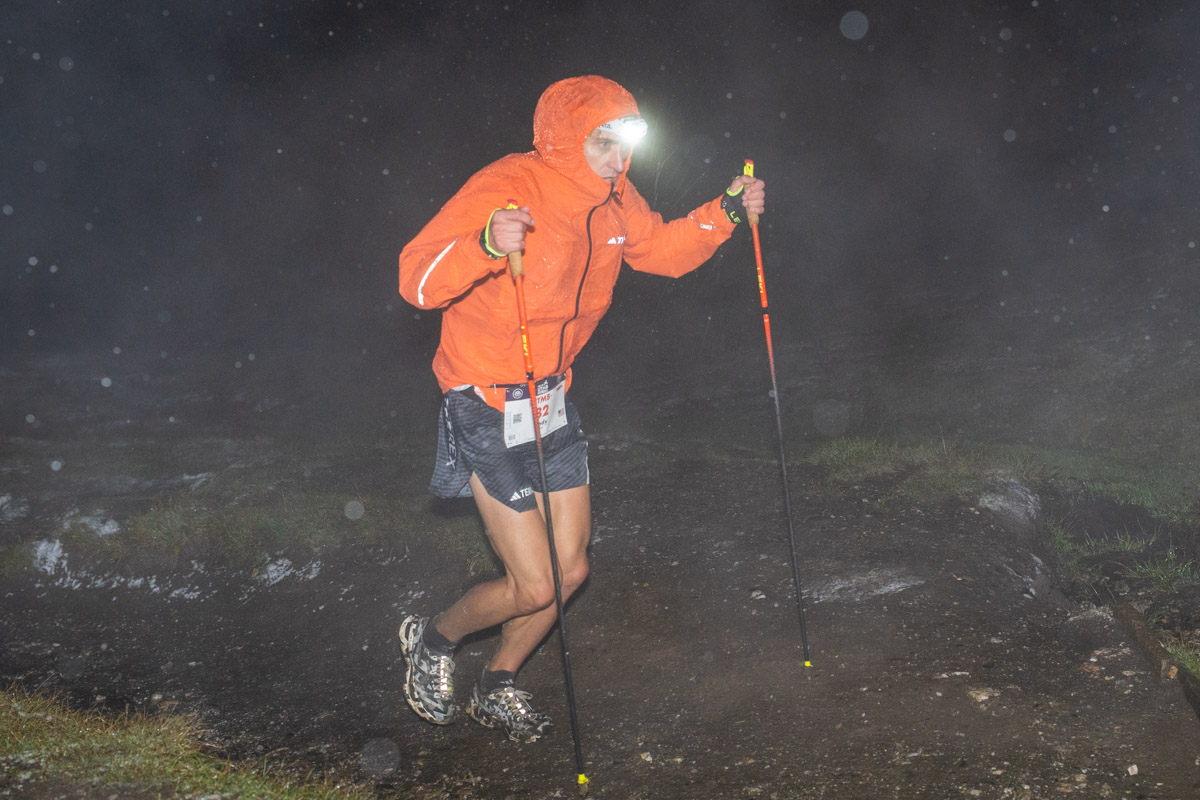
Cody Lind trusts a Petzl headlamp during a nighttime snowstorm on Grand Col Ferret at the 2025 UTMB. Photo: iRunFar/Eszter Horanyi
My headlamp battery ran out on the trail. How do I prevent this from happening next time?
The best way to avoid getting caught in the dark is to carry spare batteries, a fully charged backup headlamp, or both. We also recommend regularly charging your everyday headlamp and topping it off before any big adventures that will begin or end in darkness.
It’s also important to take precautions to prevent your headlamp from accidentally turning on in your pack and depleting the battery. Many headlamps, including the Fenix HL18R-T V2.0 Rechargeable Headlamp and Nitecore UT27 MCT Pro, have a locking mechanism to prevent this.
If you’re worried about your headlamp’s power level, keeping it on the lowest possible brightness setting will help extend its run time. However, if you run out of battery on the trail, you’ll appreciate having a small backup light, like the Nitecore NU25 MCT UL or Petzl Bindi, to get you back to the trailhead.
Unfortunately, we’ve yet to obtain and test the Light of Eärendil, “a light for you in dark places when all other lights go out.” So, keep your batteries charged and a backup light on hand!
Call for Comments
- What’s your favorite running headlamp?
- Trail runners, what headlamp do you use the most on the trails?
- What is your prized running headlamp for all-night ultrarunning?

